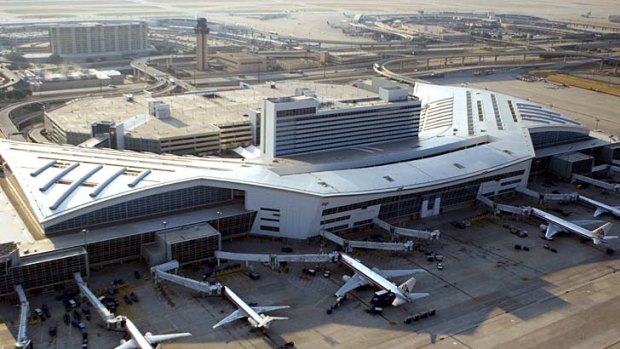
Public property ... Dallas Fort Worth is the biggest airport in the US.
The US has embraced public ownership of airports, in contrast to Australia's privatised system, writes Clive Dorman.
Imagine a world where airports are benign monopolies owned by the cities they serve and have no incentive to price-gouge for services such as car parking.
It seems bizarre Australia has opted to privatise its airports, while airports remain publicly owned in the US, the home of the free market.
Despite several attempts, there has not been a successful privatisation in the US and the airports are prevented from charging passengers more than $4.50 a head for their use, compared with Australia's free-for-all where fees range from $8 to $14 a head.
"The big payoff with an airport like DFW [Dallas Fort Worth] is the economic impact it has on the region," says Jeff Fegan, chief executive of the US's biggest airport, which is owned by the twin cities of Dallas and Fort Worth in Texas.
"In the United States, it's also against the law to take money off the airport and give it back to the cities. The cities aren't eligible to receive any dividend. In fact, we've had many years where we've had very, very good years where we
might find ourselves $10 million or $12 million ahead at the end of the year and we write a cheque to the airlines.
"In exchange for that, though, the airlines are responsible for all of our debt."
Fegan sees nothing incongruous in the US retaining public ownership of airports.
"We're in the business of creating an economic impact, connecting the world," he says. "We have Houston that's 200 [321 kilometres] to 300 miles south of us, we have Chicago that is 300 to 400 miles north of us, we have Denver, Atlanta ... we have a bunch of different major hubs that we compete with and we want to make sure we are the most attractive, best-positioned airport out there so that we can bring in more service.
"They [the cities of Dallas and Fort Worth] actually identified a tract of land that was 18,000 acres [7284 hectares] - as big as the island of Manhattan - and as a result we've been able to grow our infrastructure with very little impact on the community."
DFW's seven runways handle about 750,000 takeoffs and landings a year with the capacity for 1.3 million without serious delays, Fegan says. "We're landing four aircraft simultaneously," he says.
The US domestic airlines are fighting moves by the US Department of Transport to increase the passenger-facilities charge from $US4.50 ($4.20) a passenger to $US6. Fegan says he needs to find $US1.9 billion over the next six years for the refurbishment of four of DFW's five terminals.
"The airlines are fighting it and Congress does not seem like it will pass it this year," Fegan says. "But it's just a matter of time, though, before it does get passed because the capital needs of airports are almost insatiable.
"But if we don't get the increase, I just raise the rent [to the airlines]."
Sign up for the Traveller newsletter
The latest travel news, tips and inspiration delivered to your inbox. Sign up now.